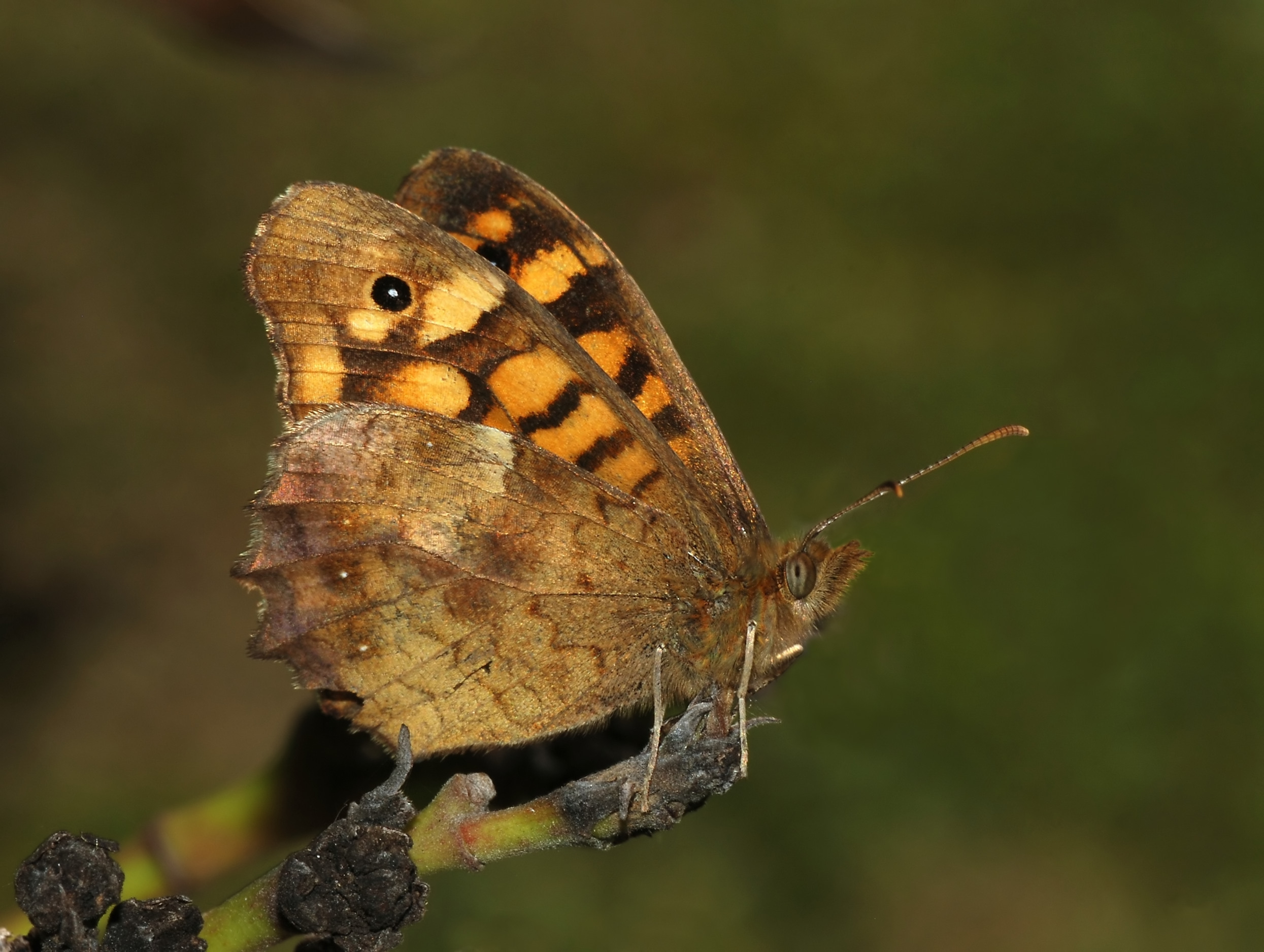- Speckled Wood
image_width = 240px
image_caption = "Pararge aegeria aegeria"
regnum =Animal ia
phylum =Arthropod a
classis =Insect a
ordo =Lepidoptera
unranked_familia =Rhopalocera
superfamilia =Papilionoidea
familia = Nymphalidae
subfamilia =Satyrinae
tribus =Elymniini
subtribus =Parargina
genus = "Pararge "
species = "P. aegeria"
binomial = "Pararge aegeria"
binomial_authority = (Linnaeus, 1758)The Speckled Wood ("Pararge aegeria") is a
butterfly found in and on the borders of woodland throughout much ofEurope . In Northern and Eastern Europe where subspecies "P. a. tircis" occurs it is brown with pale yellow or cream spots and darker upperwing eyespots. In southwestern Europe the subspecies "P. a. aegeria" has a colour which is more orange in the background; the hindwing underside eyespots are reddish brown rather than black or dark gray. The two forms gradually intergrade into each other. The speckled wood also occurs in North Africa and on the Atlantic island of Madeira. Molecular studies (Weingarter, Wahlberg & Nylin, 2006) suggest that the African and Madeiran populations are closely related and distinct from European populations of both subspecies, suggesting that Madeira was colonized from Africa and that the African population has a long history of isolation from European populations.Females have brighter and more distinct markings than males. The wingspan of both males and females is 4 - 4.5 cm, although males tend to be slightly smaller than females. Males are highly territorial and will defend their territory against intruding males. For finding females, there exist 2 basic strategies: Some males will vigorously defend a perch and the immediate surroundings, waiting for females to pass by. Others will patrol a larger territory.
Males have either 3 or 4 upper hindwing eyespots. The fourth spot shows only in flight. It appears that the 4-spotted morph tends towards patrolling behaviour to finds mates. This agrees with the probable function of the eyespots to entice
predator s likebird s to aim for the wing margin (which may be damaged without much affecting the butterfly) father than the body. On the other hand,habitat is apparently a major factor influencing mate-finding strategy: perching behavior is more common in males ofconifer woodland, whereas males of meadows tend towards patrolling behavior.(Stevens 2005)The
caterpillar is green with a short, forked tail and feeds on various species of grass includingYorkshire Fog . The chrysalis (pupa) is green or dark brown. The species is unique in its ability to overwinter in two totally separated developmental stages, as pupae or as half-grown larvae. This leads to a complicated pattern of several adult flights per year.References
* (2005): The role of eyespots as anti-predator mechanisms, principally demonstrated in the Lepidoptera. "Biol. Rev." 80(4): 573–588. doi|10.1017/S1464793105006810 (HTML abstract)
* (2006):Speciation in "Pararge" (Satyrinae: Nymphalidae) butterflies - North Africa is the source of ancestral populations of all "Pararge" species. "Systematic Entomology " 31: 621-632.
Wikimedia Foundation. 2010.

